Speed Cameras In The UK: How Do They Work And Different Types
Speed cameras are a common sight on UK roads which play a crucial role in maintaining road safety and monitoring speed limits. These devices are equipped with sophisticated technologies that monitor, track, and record the speed of every vehicle which helps reduce traffic accidents caused by over speeding. In this article, we will explore the UK speed camera types, how they operate, and their significant impact on road safety and law enforcement. Whether you're a regular commuter or an occasional driver, understanding the functionality and importance of speed cameras can help you stay compliant with traffic regulations and contribute to safer roads for everyone.
How Do Speed Cameras Work?
Speed cameras use advanced technology to monitor and enforce speed limits. They capture images and record vehicle speed to ensure compliance. These cameras are effective in various conditions and distances, from motorways to residential streets. Below is a breakdown of how speed cameras work in the UK.
- Speed Detection: Speed cameras or roadside cameras employ radar or lasers to determine the speed of approaching vehicles. The device works by projecting radio waves that are reflected to the device after hitting a moving car. The camera determines the car's speed based on the wave's return time. The laser measures speed with light beams rather than spokes.
- Verification: Once the vehicle is detected, it is then verified by a camera system, which then evaluates whether the speed exceeds the legally authorised limit for the road.
- Capture: If the car is speeding, the camera captures a moment that highlights the need for responsibility. This strong graphic shows the vehicle's registration number, the speed at which it was going, and the date and time the incident occurred. Other cameras take it a step further by including the direction of travel as well as the precise location.
- Processing: The acquired data and photos are then transferred to a central unit and thoroughly evaluated. When an offence is confirmed, the registered owner of the vehicle receives a notice of planned prosecution (N.I.P).
Why Do We Need Speed Cameras?
Speed cameras are crucial for keeping our roads safe and preventing accidents. Let us understand why speed cameras are needed.
- Saving Lives: According to the Royal Society for the Prevention of Accidents (RoSPA), almost 350 people die each year, and over 2,500 are seriously injured, just because of speeding. Inserting Speed cameras can help stop these accidents by ensuring people stick to the speed limit.
- Preventing Dangerous Driving: When drivers know that speed cameras are available, they are more likely to drive safely. That means no surprises for everyone along the way and less stress.
- Encouraging Responsible Driving: Speed cameras encourage safe and predictable driving by ensuring people follow the speed limit. This makes roads safer and easier for everyone.
- Reducing Speed-Related Crashes: Reducing speed accidents: Speed cameras are often installed in accident-prone areas. By slowing down traffic, accidents are kept to a minimum. A study by the London School of Economics found that from 1992 to 2016, running cameras reduced accidents from 17% to 39% and fatalities from 58% to 68%.
- Helping law enforcement: Police evidence on speed cameras to catch people breaking the law. This helps everyone follow traffic rules and keeps our roads safe.
- Promoting Safety and Reducing Stress: By making sure people stick to the speed limit, speed cameras promote safe and predictable driving. This helps make the roads safer and less stressful for everyone.
What Happens After You Have Been Caught by a Speed Camera?
Getting caught by a speed camera can be quite intimidating, but knowing the steps to follow can make the process easier. Here's a simple breakdown of what happens next:
- Notification of Offence: A Notice of Intended Prosecution (NIP) will be addressed to the registered owner of the vehicle within two weeks.
- Responding to the Notice: The owner must respond to Section 172 notice within 28 days adding driver details if someone else was using the vehicle.
- Fixed Penalty Notice or Court Summons: Once you have returned the Section 172 notice you will receive either an FPN or a letter requesting you to appear in court.
- If You are Stopped by the Police: They may politely warn you, fine you an FPN or enforce a court order.
What is the Penalty for Speeding?
In the UK for instance, if one gets caught speeding then he or she will be charged with a Fixed Penalty Notice (FPN) which entails a £100 fine and 3 points slashed from the license. Sometimes, the police can allow you to have the option of taking speed awareness instead of acquiring points provided the occurrence of the event was within the stipulated conditions of taking the course and you have not taken the course for the last three years. If you choose to plead not guilty the case proceeds to trial where you risk being fined up to one-tenth of your weekly wage up to £1000 for speeding in a car and up to £2500 for speeding in a motorway, especially at night, possibly additional points on one's license or suspension or even ban.
Where does the money from speed cameras go?
Since 2000 the local authorities in the UK have been permitted to retain a proportion of money generated by speed camera and spend the money on regional road safety programs. This resulted in safety camera partnerships between councils and the police force with partial government funding. However, in 2007, funding for these partnerships was decreased, permanent deterioration in 2010 made many regions to turn off their speed cameras. The funds generated from speed cameras are then utilised to fund projects that seek to enhance safety and prevent accidents on local routes.
Do Speed Cameras Take Pictures of The Driver?
Not all speed cameras take pictures of the driver's face, but some do. This is why it is important to be able respond to the Notice of Intended Prosecution (NIP) and to know which driver it refers to. This simply means that if somebody else was driving your car and you fail to produce his or her information, then you are the one who is going to be penalized for that offense. Most of the speed cameras are designed to capture an image of the car's registration number plate but some models allow for even better pictures of the driver that would enable identification to be as accurate as possible.
Can Speed Cameras Catch You from the Front?
Most speed cameras in the UK, like the familiar Gatso, are rear facing. However, there are exceptions. Cameras such as the Truvelo use a forward-facing design. These cameras are positioned to capture the front of vehicles, ensuring they can effectively detect speeding from that angle.
Currently, drivers in the UK should observe both types of cameras while on the roads effectively. Rear-facing cameras normally point to the rear and capture your number plate as your vehicle passes. Conversely, front-facing cameras such as the Truvelo are placed to capture photos of the front of your car. This means whether you are closing in on or moving away from these cameras, they can still tell whether you are over speeding.
Knowledge of the various types of speed cameras and their functionalities assist motorists in obeying the laid down speed limits to reduce cases of associated accidents on the roads. Whether they are rear-facing Gatso or forward-facing Truvelo, speed cameras are effective weapons in the fight against reckless driving and dangerous standards.
Does Speed Cameras Flash?
A speed camera flash typically resembles a bright camera flash and is utilized to capture a clear image of a speeding vehicle, particularly in dark conditions. However, it is important to note that not all speed cameras utilize a visible flash. Some cameras make use of infrared technology to discreetly capture a vehicle's speed without emitting any visible light, enabling them to effectively operate day and night without alerting drivers to their presence.
Also Read: Tips For Driving In The Dark
Different Types of Speed Cameras in UK
Speed cameras in the UK come in several types and are effective in controlling vehicle speeds. Understanding these speed camera signs helps drivers identify speed enforcement locations, reducing fines and improving traffic safety. Speed cameras in England are often found in strategic locations like accident black spots, school zones, and busy city roads. Here are some well-known types of roadside cameras and how they work:
1. Fixed Speed Cameras: How Do They Work?
Fixed Speed cameras are usually mounted on certain posts at definite sites on the roads with a fixed position designed for recording the speed of the moving cars. It uses radar or sensors instilled in the road to determine the speed of a car. When a vehicle is caught moving beyond the allowed limit, the camera mounted on the road takes a picture of the vehicle with its registration number. These images are then utilized to ticket the owner for speeding.
How Does Fixed Speed Cameras Look Like?
Typically, fixed speed cameras are enclosed in yellow or grey boxes, which can either be placed on poles or gantries provided along roadsides.
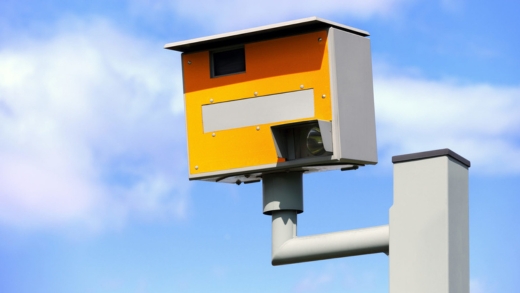
There are several types of fixed speed cameras:
- Digital Gatso speed cameras: These gatsometer speed cameras use radar to detect speeding vehicles. They have a large, yellow rectangular box and take pictures of vehicles from the rear.
- Truvelo Combi speed cameras: These devices use sensors in the road to measure speed. They come in smaller, blue, or grey boxes and take pictures of the driver and the front license plate.
- Truvelo D-Cam speed cameras: This type of fixed speed camera is a digital version of the Truvelo Combi. They use the same sensor technology and come in compact housings that can take high-resolution images in all lighting conditions.
- HADECS speed cameras: This type of fixed speed cameras are often found on smart motorways. They use radar technology to monitor multiple lanes, are discreet, and can adjust speed limits dynamically.
2. Average Speed Cameras: How Do They Work
Average speed cameras determine a vehicle's speed by measuring the time it takes to travel between two fixed points. They use Automatic Number Plate Recognition (ANPR) technology to capture the vehicle's number plate at several locations along a road. The system then calculates the average speed over that distance to check for speeding.
How Does Average Speed Cameras Look Like?
These cameras are typically mounted on tall poles or gantries, and they have identifiable camera housings. Many of them have multiple cameras to cover different lanes of traffic. They are often painted yellow for better visibility, although some may be grey.
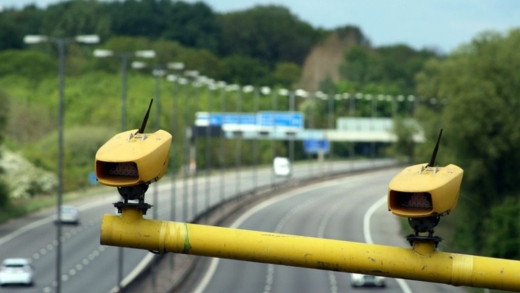
Different Types of Average Speed Cameras:
- SPECS Average Speed Camera: These spec speed cameras are common in the UK and use infrared technology to monitor vehicle speed day and night.
- Siemens SafeZone Average Speed Camera: Designed for urban areas, these cameras are effective over short distances and can blend in with existing street furniture.
- SpeedSpike Average Speed Cameras: These cameras are highly accurate, covering wide areas including complex road networks. They are reliable in various weather conditions and often used in areas with variable speed limits.
3. Speed and Traffic Cameras: How Do They Work?
Speed cameras and traffic cameras are used to monitor vehicle speeds and ensure road safety. They detect vehicles that exceed the speed limit or commit traffic violations and capture images or videos for issuing fines or penalties. The cameras use radar or laser technology to measure vehicle speed and capture evidence to issue penalty notices.
Types of Speed and Traffic Cameras
- SpeedCurb Speed Cameras: SpeedCurb cameras are small and are often placed in city areas or on roads where speeding is common. They use radar to check how fast vehicles are going and take pictures of vehicles that are going over the speed limit. These cameras are good at reducing speeding in city areas.
- REDFLEX Speed Cameras: REDFLEX cameras are advanced devices that use both radar and digital imaging technology. They can take high-quality pictures or videos of speeding vehicles from different angles. REDFLEX cameras are usually used at intersections or on highways where speeding is a concern.
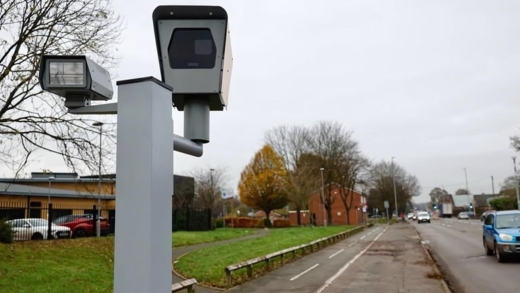
4. Mobile Speed Cameras: How Do They Work?
Mobile speed cameras, often found in vehicles or handheld devices, use radar or laser to measure vehicle speed. They detect speeding vehicles and take photos as evidence for issuing tickets. They are commonly used on highways, urban roads, or during temporary enforcement operations where fixed speed cameras may not work well.
How Does Mobile Speed Cameras Look Like?
Mobile speed cameras or speed van cameras may be in small, inconspicuous vehicles parked at the roadside or handheld devices used by law enforcement officers. They are designed to be portable and blend into the surroundings to monitor traffic effectively without being easily noticed.
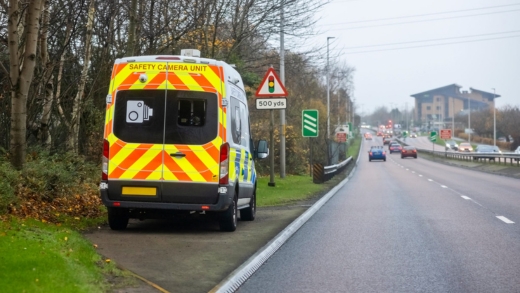
- Long Ranger Mobile Speed Camera: The Long Ranger van speed cameras are advanced technologies that accurately enforce speed limits. These cameras employ powerful radar and laser technology to determine vehicle speeds across vast distances. Unlike standard fixed cameras, Long Ranger devices are portable and may be strategically deployed in various locations to monitor traffic and prevent excessive speeding. They capture high-quality images and data, ensuring that traffic regulations are accurately enforced, making roadways safer for everyone.
New Types of Speed Cameras
Modern technologies in speed cameras include Vector-SR, and two-way speed cameras are now in the UK to enhance safety on the roads. These cameras are better at identifying speeding vehicles and are not as conspicuous as the old ones.
1. Vector-SR Speed Camera: How Do They Work and How Do They Look
The Vector-SR, for example, relies on a video-based system, together with an Intelligent Grid that can assess whether a driver is speeding or not. This does not flash when taking a picture and does not depend on painted lines to identify speeding cars. The yellow Vector-SR cameras in use are equipped with infrared that works well in low-light conditions and are pole-mounted. They can also patrol two directions at the same time and are operational at any time within day.
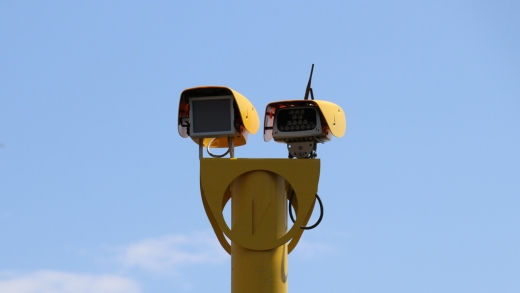
2. Two Way Speed Cameras: How They Work and How Do They Look
These cameras record traffic from both sides, and it is almost impossible to avoid getting captured if they are speeding. They can also identify violations such as not fastening seat belts or using mobile phones while driving. The two-way cameras are installed on powerful poles, and it is difficult to notice them easily as compared to the normal cameras. This design is specific to ensure that drivers do not overspeed on the road at any one time.
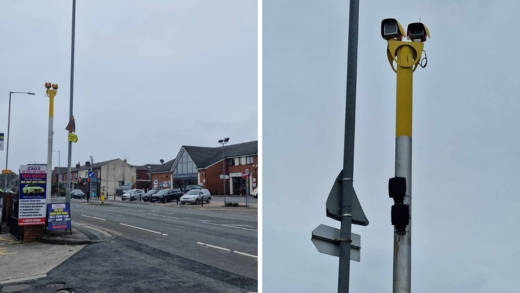
How To Avoid Speeding Tickets?
Avoiding speeding tickets requires following traffic laws and staying alert while driving. Here are some tips to help you avoid fines:
- Always follow the speed limits, especially in unfamiliar areas or near schools and residential zones.
- Consider using cruise control on highways to maintain a steady speed and avoid unintentional speeding.
- Keep an eye out for speed limit signs, road conditions, and changes in traffic flow.
- Be mindful of areas with speed cameras and strictly adhere to the speed limits there.
- Regularly check your speedometer, especially after accelerating or transitioning between different speed zones.
- Use navigation apps or maps to identify potential speed traps and plan alternate routes if needed.
- Avoid distractions like using mobile devices or eating, as they can lead to unintentional speeding.
- Reduce speed during adverse weather conditions to ensure safe driving.
FAQs on Speed Cameras
1. How do I know if a speed camera caught me?
You will usually get a Notice of Intended Prosecution (NIP) within 14 days of the offence. This notification will be issued to the vehicle's registered owner, notifying them of the suspected speeding infraction and outlining the following steps.
2. How fast do I have to drive to get a speeding ticket?
In the United Kingdom, you may get a speeding penalty if you exceed the posted speed limit by any amount. However, enforcement typically begins at 10% over the limit plus 2 mph. For example, driving at 35 mph in a 30-mph zone may result in a ticket.
3. How do you know if a speed camera is working?
Speed cameras may use a flash to capture an image, although this is not always the case. The most reliable indicator is receiving an NIP. Some modern cameras use infrared technology and do not flash visibly.
4. Do speed cameras work at night?
Yes, most speed cameras operate at night. They use either flash or infrared technology to capture clear photographs of speeding vehicles in low-light conditions.
5. Does a speed camera have to be visible?
No, speed cameras do not need to be visible. While many are identifiable and accompanied by speed camera signs to prevent speeding, mobile cameras and certain fixed units may be hidden or unnoticed.
6. How far away can speed cameras catch you from?
The range varies depending on the type of speed camera. Fixed cameras normally monitor a short range of about 100 metres, whereas Long Ranger mobile speed cameras can collect speeds from up to 1,000 metres away.
Conclusion
The UK speed cameras are now firmly rooted in the road network of Britain with a mission to address speeding and to reduce crash frequencies. Recognising how these cameras work, and the several types will help drivers in saving their time and avoiding all the bother of getting penalties. From the tradition Gatso speed cameras to the modem devices such as the vector-SR, all have a definite role to play in the surveillance and 'policing' of speed limits. Whether they function through radar, laser, or average speed calculations, speed cameras are there to promote safer driving habits. Staying informed and driving responsibly not only helps avoid fines but also significantly contributes to the overall safety and efficiency of the UK's roadways.
